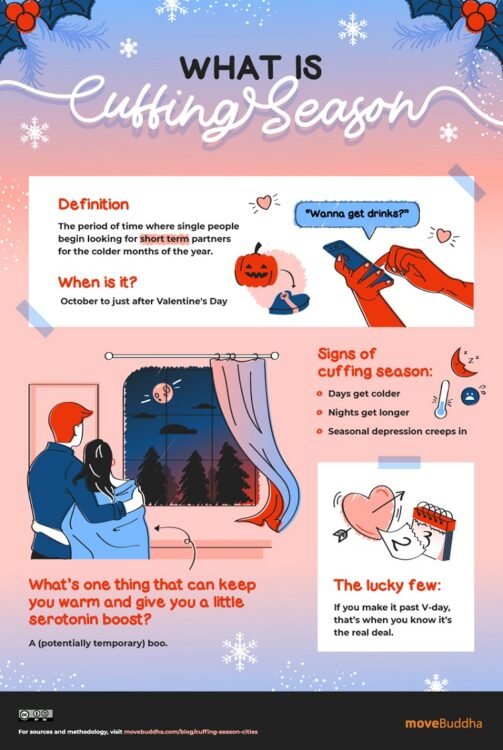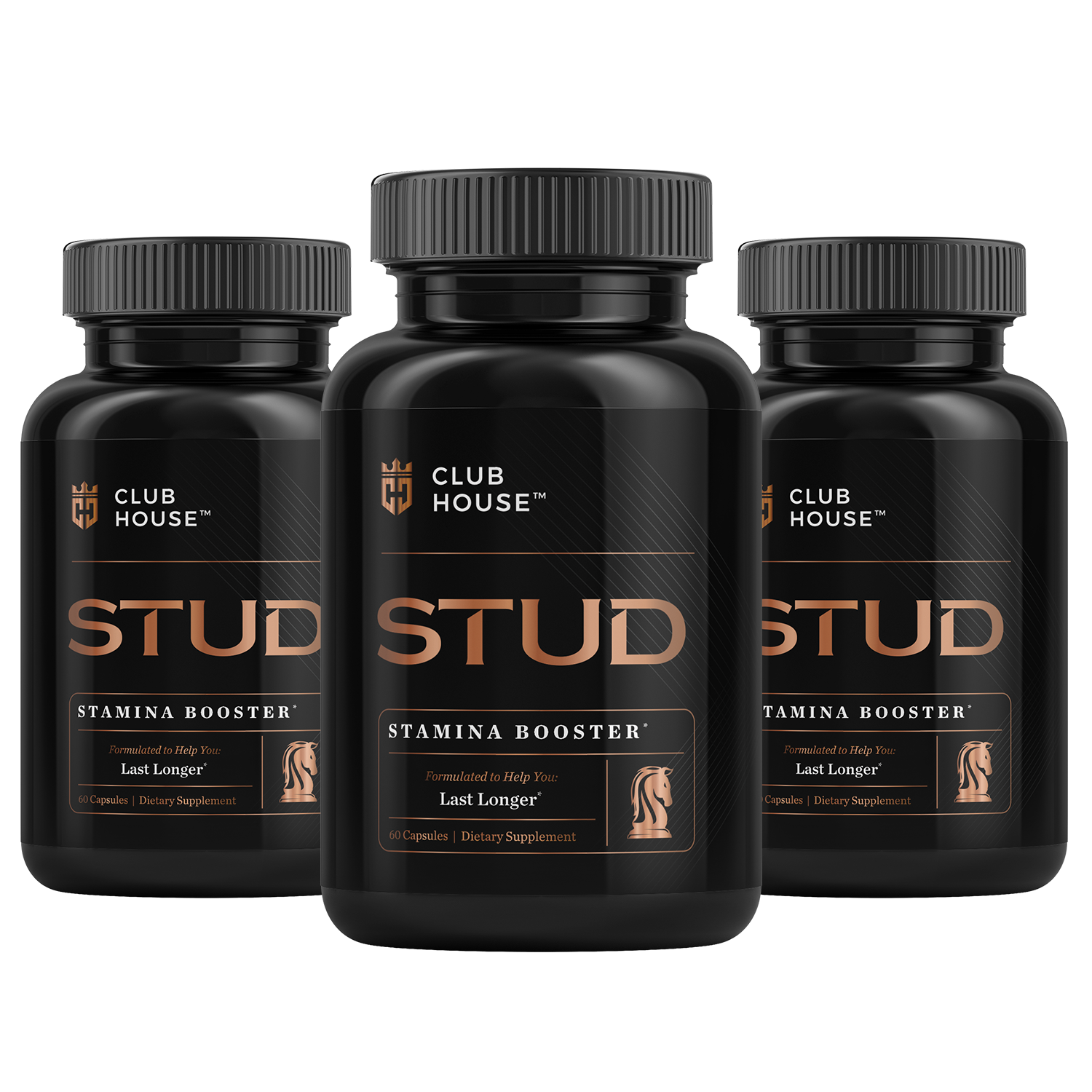This post looks at how a cuffing season schedule can help you combat the winter blues.
Suffering from a case of the ‘winter blues’ is common as nights get colder and longer, but for many, this period can be much more than just a funk.
Seasonal depression is recognized in the medical field as an actual disorder, seasonal affective disorder – or SAD.
Luckily, this is not a disorder that has to go left untreated, and some studies reveal evidence of ways that we subconsciously fight off SAD when the colder months start to roll in.
That’s where a cuffing season schedule comes in.
A what?
And, what’s cuffing season exactly?
What Is Cuffing Season?
The term has been used since 2011 and is defined by the Merriam-Webster Dictionary as,
“A period of time where single people begin looking for short term partnerships to pass the colder months of the year. The cuffing season usually begins in October and lasts until just after Valentine’s Day.”
Merriam-Webster Dictionary
Now, a cuffing season schedule might sound strange to some, but the fact is that cuddling up to a partner can not only keep you physically warm, but it can also boost the serotonin levels in your brain, helping to combat SAD.

Before we dive more into cuffing season and which cities to consider for the best cuffing season schedule, let’s first take a closer look at seasonal affective disorder (SAD) and the scientific theories behind how to treat it.
SAD, Explained
According to Cleveland Clinic, “about 5% of adults in the United States experience SAD [seasonal affective disorder].”
An even higher percentage of Americans, 10-20%, experience a bit milder form of SAD, considered “the winter blues.”
Seasonal depression is not often a concern in the summer months.
However, some of the characteristics of the winter season have huge biological effects that lead to experiencing SAD in the first place.
For instance, consider that dreaded feeling you get when the sun starts setting at 4 pm.
Less exposure to sunlight affects a lot more in your body than you may realize.
Your biological clock changes causing difficulty in regulating mood.
Less sun can cause vitamin D deficiencies which in turn cause serotonin levels in your brain to drop, and melatonin can be overproduced, leading to a sluggish feeling throughout the winter.
It’s no surprise that SAD is a constant issue for colder, cloudier cities in the north like Seattle, WA – so much so that folks often have to move away when it gets to be too much.
Treatment options and lifestyle changes for seasonal affective disorder are similar to those for depression – talk therapy, regular exercise, normalizing sleep patterns, and even medication in severe cases (according to Mayo Clinic).
There are, however, alternative ways of managing SAD-specific symptoms.
Mayo Clinic suggests light therapy as one of the very first steps you can take to combat seasonal depression and simple treatment that you can take into your own hands.

Also known as phototherapy, this treatment involves getting a special light box that mimics the natural light from the sun and sitting in front of the light first thing when you wake up in the morning.
Positive effects of light therapy will typically be seen within a few days or weeks.
As for the second method, and one we find particularly interesting…
The Cuffing Season Solution to SAD
The second option that many people subconsciously do is seek out companionship for the cold winter months.
This period is now commonly referred to as “Cuffing Season.”
Primal in nature, the seasonality of coupling has been ingrained in our habits for centuries.
Research suggests that almost every aspect of our society has been shaped around keeping ourselves warm.
Take cuddling, for example, which developed from humans simply pressing up against each other to stay warm in harsh weather conditions (like penguins).
For many, cuddling is now something we look forward to with our S.O.
Considering our primal need for physical and social warmth during the winter, when you toss in the mess of emotional turmoil that often comes with the holiday season, it’s no wonder romantic interest is heightened during this time of year.
This phenomenon happens whether you think about it or not.
One study even found that being cold makes people more interested in romance movies, supporting the sudden interest in all things lovey-dovey once temperatures drop.
Though coupling up can surely boost your serotonin levels and combat SAD, it’s important to stay smart and self-aware when toying around with cuffing season.
Communication is key in any winter cuff to ensure that both parties are on the same page and avoid anyone feeling used.
One thing to consider when finding a partner during the winter: do you see this relationship continuing once winter is over?
If so, great!
If not, also great!
Just be sure that you both know each other’s expectations for the long run.
Where to Find a Winter Cuff?
So you’ve consciously or subconsciously decided that you want to be in a relationship for the winter – what next?
A recent study from moveBuddha sought to answer the question, what is the best place to be for cuffing season?
They considered factors like low temperatures, plenty of date night activities, and a high percentage of young and single adults to compile a ranking of the top 25 US cities for cuffing season.
If you live in the Midwest or New York, you’re in luck.
The top five cities on the list were:
- Ann Arbor, MI,
- Rochester, NY,
- Buffalo, NY,
- Madison, WI, and
- Syracuse, NY (in that order).
Yes, these places get very cold in the winter and could be triggers for SAD, but they all offer plenty of things to do at a reasonable cost and plenty of young singles to do them with, making going on dates an ideal way to pass the longer nights.

If you don’t live in one of the top 25 cities and you’d still like a winter cuff, there’s no need to fear.
Cuffing season is universal!
Now that we understand the biology behind why we want romance in the winter, it’s highly likely that you are not the only one in your area seeking companionship.
If you’re on the shy side, now may be a better time than ever to put yourself out there with chances of success.
Whether the season brings a new romance or not, developing any level of relationship with someone new is a fun way to spend your time and energy when you’re looking for a mood boost.
Treat Yo’ Self, First
As we get through the rest of these cold winter months, be mindful of the possibility of the winter blues and healthy ways you can keep them at bay – emphasis on healthy.
Even with all the positive effects of cuffing season, it is essential not to rely solely on your relationship with another person to cure seasonal depression.
For some, the thought of dating or frantically looking to get into a relationship can often do more harm than good, especially if you become overly focused on finding your perfect winter match.
Do not ignore your wellbeing to chase a Hallmark movie romance.
And if you do decide to go the relationship route, remember that communication and defining clear expectations are key for a successful cuffing season schedule.
Most importantly, if you find the effects of seasonal depression genuinely overwhelming, do not hesitate to seek professional help and treatment, as it is a genuine and valid feeling.


